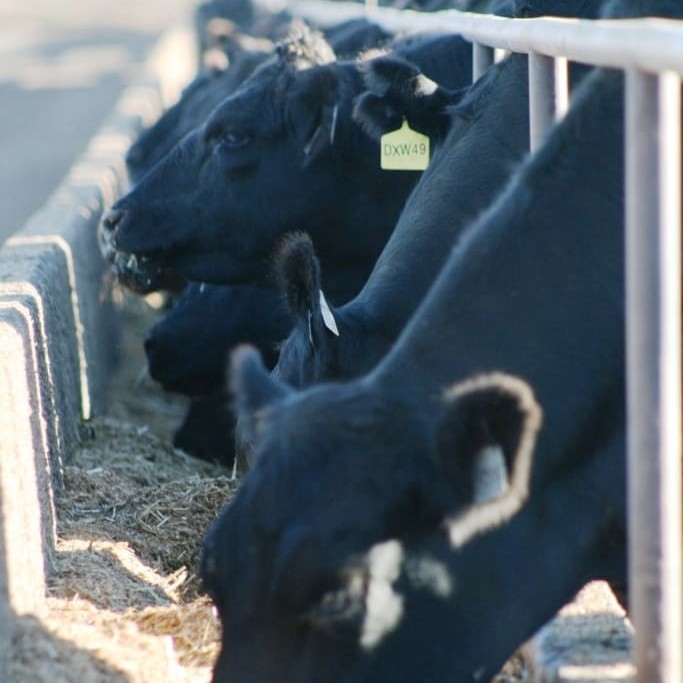 Carcase weight and rib fat depth have been found to strongly influence the presence of dark-cutting in carcases in a research project completed recently at Murdoch University.
Carcase weight and rib fat depth have been found to strongly influence the presence of dark-cutting in carcases in a research project completed recently at Murdoch University.
Beef CRC researcher Peter McGilchrist and colleagues used data collected over six years in a Western Australian abattoir on more than 200,000 MSA-graded carcases to investigate a range of animal and pre-slaughter factors that impact on the rate of dark-cutting.
Data recorded for each carcase included weight, fat depth, marbling, eye muscle area and ossification (physiological age). In addition, lot size and finishing system (grain or grass-based) were recorded.
Overall, 8.75 percent of carcases graded at the plant had an ultimate pH greater than 5.7, which tends to result in dark-cutting.
During the period the data was collected, from 2002 to 2008, the average carcase eye muscle area and marbling increased while ossification at slaughter decreased, indicating that animals were younger at slaughter.
Carcase rib fat depth averaged between 8 and 11mm and reflected the differences in animal nutrition between years.
Carcase weight and rib fat depth
Increasing carcase weight and rib fat depth were both associated with reduced rates of dark-cutting. As carcase weight increased from 150 to 220kg, the predicted proportion of carcases with a pH above 5.7 decreased from around 18pc to 5pc.
This indicates there is a very high incidence of dark-cutting in light vealer type cattle.
As carcase weight increased beyond 250kg, the proportion of carcases with an ultimate pH higher than 5.7 continued to decrease, but at a slower rate, suggesting 250kg may be an important weight benchmark in some systems.
As rib fat depth increased from 0-20mm, the predicted proportion of non-compliant carcases with an ultimate pH above 5.7 decreased from around 14pc to 4pc.
The relationship between increasing carcase weight and rib fat depth was likely to be associated with better nutrition of heavier and fatter cattle, Mr McGilchrist said.
“Animals that are heavier and have higher rib fat can be assumed to have received better nutrition in the months leading up to slaughter, allowing for high muscle glycogen concentrations,” he said.
An interesting finding was that carcase marbling was not associated with rates of dark-cutting, even though carcase rib fat depth and carcase weight were.
Physiological age of carcases
Ossification is measured in increments of 10 from 100 to 590 and is an assessment of physiological age of a carcase. Physiologically older animals have higher ossification scores.
Overall, lower ossification scores in cattle at the same carcase weight indicate a more rapid growth rate throughout life.
Generally, ossification score had a significant association with pH compliance of carcases, however in carcases with an ossification score less than 190, the effect was negligable.
In carcases less than 350kg, the rate of dark-cutting increased from around 6pc to 20pc as ossification score increased from 100 to 300, with the biggest increases occuring at ossification scores above 200. In carcases above 350kg, non-compliance increased from around 0pc to 7pc as ossification increased from 100 to 300.
Grain versus grass finishing
Season and finishing system (grass versus grain) also had a significant effect on the pH compliance of carcases.
The highest incidence of dark-cutting was in spring and summer even though the driest months are in autumn.
“During autumn, around 90pc of MSA-graded cattle in WA are sourced from feedlots,” Mr McGilchrist explained.
“The effect of higher rates of dark-cutting in spring and summer is largely due to the reducing amount of metabolisable energy in the pasture in the weeks prior to slaughter. Even though the cattle may appear in good condition, low energy levels in the pasture mean there will be low glycogen levels in the muscle, resulting in a higher incidence of dark-cutting.”
Overall, grain-finished cattle had 5.4pc fewer carcases classified as dark-cutters based on pH, compared with cattle finished on pasture. Feedlot rations have higher energy content than grass-based finishing systems, leading to higher muscle glycogen concentrations.
In addition, lot size was also associated with rate of dark-cutting. As lot size increased from 10 to 80, the predicted proportion of carcases with an ultimate pH above 5.7 decreased from 10pc to around 7pc. However there was little improvement in pH compliance beyond 80 head.
Individuals in large mobs are thought to be more resilient to the stresses involved with the pre-slaughter period than individuals in small mobs.
Nutrition and dark-cutting
The research also showed heavier cattle with increased fatness had lower rates of dark-cutting. This underpins the importance of good nutrition and high muscle glycogen storage prior to mustering, transport and lairage to reduce rates of dark-cutting.
- This article has been adapted from a journal article submitted to Meat Science titled ‘Increased eye muscle area, lower ossification scores and improved nutrition have a lower incidence of dark-cutting’
